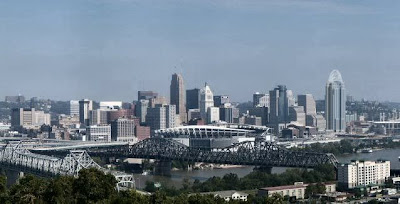On Tuesday, September 15, the Democrat controlled Ohio House approved the Equal Housing and Employment Act (HB 176) that bans housing and employment discrimination based on sexual orientation and gender identity. The bill passed with a 56-39 vote margin and now moves to the GOP controlled Senate, where passage is less likely.
As of today, twenty states and the District of Columbia have similar laws in effect and 12 states currently offer full housing and employment protection for the LGBT community. If this legislation passes, Ohio will become the 13th state to offer full protection for the LGBT community against such discrimination, putting Ohio on the forefront of fighting for gay rights. This will send a message to the LGBT community in Ohio and across the country that Ohio is a welcoming and an open-minded place that promotes strong gay communities.
I personally believe having a strong gay community is a key part of having a strong urban core and that this legislation is irrevocably tied to the health of Cincinnati’s core. When you look at cities in North America with vibrant cores, they tend to have successful, happy LGBT communities as well. This occurs because we gays are an urban bunch, often pioneering urban development, forming a niche in the city, and claiming a space of our own. These ‘gayborhoods’ become identifiable with the LGBT community and a sense of pride is taken to ensure they are maintained. Chicago has their Boystown, San Francisco has The Castro, and New York has…well…Manhattan. These places are thriving urban neighborhoods, act as ethnic enclaves for their respective cities, and are a key part of a diverse, vibrant urban core.
If Cincinnati and other Ohio cities want to have diverse, active, and interesting urban cores, Ohioans must embrace the LGBT community and allow them to maintain or establish a successful niche. If this legislation passes, Ohio will take steps towards achieving that goal and if it does not, my community will continue to feel like second class citizens and look elsewhere to live; our fabulous urban lifestyles in tow.
Cincinnati needs a strong gay community for a more vibrant, diverse, eclectic urban core. This is one of many reasons that I support the passage of HB 176 and urge the Ohio Senate to pass the bill as soon as possible.


